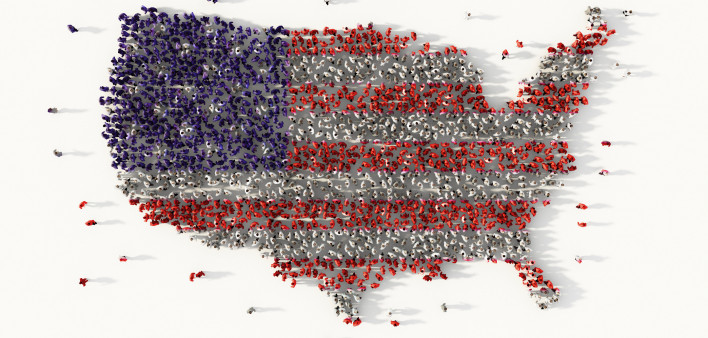The federal government awarded $117 million to local and state health departments to support their efforts to fight HIV. The funding, which arrives from the Centers for Disease Control and Prevention (CDC), goes to seven states that have a high HIV burden in rural areas and to the 50 localities (mostly counties) that make up more than half of new HIV diagnoses in the nation.
This is the second round of CDC funding for the federal initiative “Ending the HIV Epidemic: A Plan for America,” which was launched in 2019 and is sometimes referred to as the EHE initiative. The HIV plan aims to lower new HIV rates 75% by 2025 and 90% by 2030. This would amount to fewer than 3,000 HIV cases a year.
Today, CDC awarded the second major round of #EndingHIVepidemic funding to state and local health departments. #EHE remains as a priority. Innovative, community-driven strategies are at the heart of this initiative, and we are committed to moving forward. https://t.co/WNOtp0Ylck pic.twitter.com/VYYmi1z2ai
— Dr. Jono Mermin (@DrMerminCDC) July 27, 2021
The funding promotes efforts to promote health equity and address racial and ethnic disparities in the epidemic in the 57 targeted areas. Black and brown and LGBTQ people, for example, face a higher risk of contracting HIV and developing related health complications.
“Longstanding inequities continue to contribute to severe disparities among people with HIV,” said Demetre Daskalakis, MD, MPH, director of the CDC’s Division of HIV/AIDS Prevention, in a press release announcing the new funding. “That is why this initiative encourages a comprehensive, whole-person approach to care that not only provides treatment and prevention but addresses core needs and the social determinants of health that contribute to disparities.”
These disparities are caused by, for example, poverty, stigma, unequal access to health care and education, systemic racism, homophobia and limited employment opportunities, the CDC points out.
Jesse Milan Jr., the CEO of the national advocacy group AIDS United, said the new round of funding was especially needed to address health disparities across the nation. “These new resources for the ’Ending the Epidemic Initiative have been needed for a long time,” he wrote in a statement on AIDSUnited.org. “They have transformative potential for supporting state and local health departments to revitalize and expand their HIV prevention and treatment work, which has shifted amid the ever-changing landscape of COVID-19.”
The funding will support the four pillars of the plan to end HIV:
- Diagnose all individuals with HIV as early as possible after infection;
- Treat HIV rapidly and effectively to achieve long-term viral suppression;
- Prevent at-risk individuals from becoming HIV positive, including the use of pre-exposure prophylaxis (PrEP); and
- Rapidly detect and respond to emerging HIV clusters to further reduce new transmissions.
Want to learn more about Ending the HIV Epidemic (#EHE) in U.S. initiative efforts? Attend the virtual #PACHA meeting on 8/3 & 8/4 to learn more about the implementation of EHE activities, expanding #PrEP access, & more! Learn more: https://t.co/dpv5f6xZf1 #EndHIVEpidemic pic.twitter.com/z11NIOappu
— HIV.gov (@HIVGov) July 30, 2021
This will result in the expansion of syringe service programs, clinics specializing in sexually transmitted infections and HIV testing sites in ways that are culturally relevant for the communities concerned—for example, by conducting more tests in Black churches or offering more health services via telehealth to reach rural residents.

Ending the HIV Epidemic: A Plan for AmericaCourtesy of HIV.GOV
The HIV plan’s 57 key jurisdictions, pictured in the map above, include 48 counties plus Washington, DC, and San Juan, Puerto Rico as well as Alabama, Arkansas, Kentucky, Mississippi, Missouri, Oklahoma and South Carolina, which comprise the seven states with a very high rural HIV burden.
You can read a complete list of the funding recipients, along with the amount they received, in this PDF chart on CDC.gov. For example, Texas and Houston each received $420,000 to scale up HIV prevention services in STI clinics. In addition, four counties in Texas—Bexar, Dallas, Tarrant and Travis counties—received a total of $6.07 million as part of the core funding to end HIV.
“These awards will help us regain the much-needed momentum toward ending the HIV epidemic,” said CDC director Rochelle P. Walensky, MD, MPH, in the press release. “With continued infusion of new resources and innovation, we still have a once-in-a-generation opportunity to put this epidemic in the history books.”
How close is your state to ending its HIV epidemic according to the national plan’s criteria? Find out with the interactive AHEAD dashboard. To learn more about “Ending the HIV Epidemic,” read an overview at HIV.gov and visit the official webpage at HRSA.org. For a related POZ article, see “Plans to End the HIV Epidemic at Home and Abroad.”







Comments
Comments